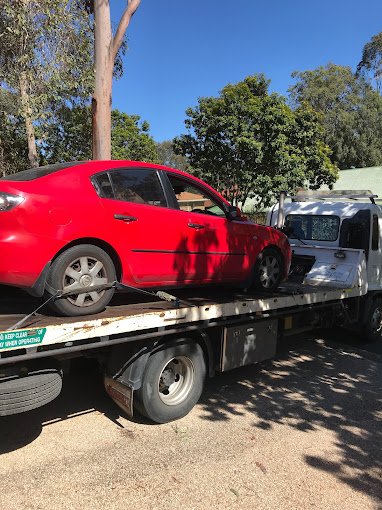1. The Environmental Impact of Old Cars
Old cars, especially those no longer in use, pose a significant threat to the environment. They leak harmful chemicals like motor oil, antifreeze, and transmission fluid into the soil, contaminating water sources. Additionally, these vehicles can sit in landfills for decades, contributing to an ever-growing waste problem.
However, by sending your old car to a scrap yard, you are participating in a process that prevents environmental hazards. Instead of letting your car rot away in a landfill, scrapping it allows for recycling of its valuable components and responsible disposal of toxic materials.
2. What Happens to an Old Car at a Scrap Yard?
When you drop off your car at a scrap yard, the process is more complex than simply crushing it. Scrap car removal dismantle vehicles, separating parts that can be recycled or repurposed. Recyclable metals like steel, aluminum, and copper are recovered, while harmful substances are safely disposed of.
Scrap yards essentially give your old car a second life by reusing materials that would otherwise go to waste. From the tires to the battery, nearly every part of a car can be recycled or reused in some capacity.
3. The Economics of Scrapping: How You Can Profit
Did you know that scrapping your car can also benefit your wallet? Scrap yards typically pay for vehicles based on the value of the materials that can be recovered. Steel, being the primary material in most cars, is one of the main reasons old vehicles are worth something, even after they’ve stopped running.
The market value of metals fluctuates, but selling your old car to a scrap yard often provides a quick and easy way to turn an unusable asset into cash. Many scrap yards even offer to tow your car for free, reducing the hassle.
4. Parts with a Purpose: Recycling Vehicle Components
Not all parts of a car are destined to be melted down. Many components, such as engines, transmissions, and catalytic converters, can be refurbished and resold. These parts go on to repair other vehicles, reducing the demand for manufacturing new ones.
This practice helps conserve resources and prevents unnecessary waste, contributing to a more sustainable automotive industry.
5. How Scrap Yards Help Conserve Natural Resources
By recycling materials like metals, scrap yards reduce the need for mining and raw material extraction. Mining is energy-intensive and has a substantial environmental impact, from deforestation to water pollution. Cash For Cars Removal Curtin
Through car scrapping and recycling, we can minimize the need to mine new metals, thus conserving natural resources and reducing the ecological footprint of the auto industry. Every recycled car is a step towards a more sustainable future.
6. The Scrap Metal Market: Driving the Circular Economy
Scrap yards are a key player in the circular economy, a system that focuses on keeping products and materials in use for as long as possible. When old cars are scrapped, the metals and other materials recovered are reintroduced into the economy, feeding into the production of new goods without the need for new resources.
The scrap metal market is booming, driven by the demand for sustainable materials in industries like construction, manufacturing, and even tech. Scrap yards help fuel this market by supplying recycled metals, ensuring that valuable resources don’t go to waste.
7. Reducing Toxic Waste Through Proper Car Disposal
Old cars can contain hazardous substances, from lead-acid batteries to mercury switches, that need to be handled carefully to avoid environmental damage. If improperly disposed of, these materials can seep into the ground, causing long-term contamination.
Scrap yards follow strict environmental regulations to ensure that these toxic materials are properly managed, reducing the risk of pollution. They also reclaim harmful fluids and gases, preventing them from entering landfills or the atmosphere.
8. How Scrap Yards Reduce Carbon Footprints
Recycling metals from old cars uses far less energy than producing new metals from raw materials. For example, recycling steel saves about 60% of the energy required to produce it from iron ore. This energy savings translates into a significant reduction in greenhouse gas emissions.
By scrapping your car, you are directly contributing to a lower carbon footprint, helping to combat climate change. It’s a simple yet effective way to make a positive environmental impact.
9. The Role of Technology in Modern Scrap Yards
Gone are the days of purely manual labor in scrap yards. Today, modern technology plays a significant role in making the scrapping process more efficient and environmentally friendly. Advanced machinery can sort materials with greater precision, ensuring that as much of a vehicle as possible is recycled.
In addition, some scrap yards use automation and AI to improve the dismantling process, reduce waste, and streamline operations. This not only speeds up the process but also reduces the margin for error, making the recycling process more effective.
10. Repurposing: Giving Old Cars New Life
Not every part of your old car will end up in the scrap heap. Some components, such as seats or tires, can be repurposed for different uses. For example, old tires can be turned into rubber mulch for landscaping, while seats can be refurbished for use in other vehicles or even as furniture.
By thinking outside the box, scrap yards find creative ways to give old car parts new life, contributing to a culture of reuse and sustainability.
11. The Future of Scrap Yards and Sustainable Auto Recycling
The role of scrap yards in environmental conservation is expected to grow in the coming years as the demand for sustainable practices increases. Innovations in recycling technology and the global push towards sustainability mean that scrap yards will play an even more critical role in reducing waste and conserving resources.
With governments and industries focusing on green initiatives, scrap yards are likely to become even more integral to the automotive and recycling sectors.
12. How to Scrap Your Car the Right Way
If you’re ready to scrap your car, it’s important to do it the right way. First, remove any personal belongings and cancel the vehicle registration. Next, research local scrap yards to find a reputable one that offers fair pricing and follows environmental standards.
Ensure that the scrap yard provides a certificate of destruction, which proves that your car has been disposed of properly. This step helps you avoid any future liability issues.
13. The Hidden Value of Non-Metal Components
While metals like steel and aluminum get most of the attention in car recycling, non-metal components also hold value. For example, plastics from the interior can be recycled into new products, while rubber from tires can be repurposed for various uses.
The hidden value of these materials often goes unnoticed, but they play a significant role in reducing the overall waste produced by old cars.
14. What You Need to Know Before Selling Your Old Car to a Scrap Yard
Before selling your car to a scrap yard, there are a few key things to keep in mind. First, understand the value of your car’s materials by researching current scrap metal prices. Second, be aware of any potential fees for towing or processing.
It’s also important to choose a licensed and environmentally compliant scrap yard to ensure that your car is recycled responsibly.
Conclusion
Your old car may seem like nothing more than a pile of scrap, but in reality, it holds hidden value. Not only can you profit by selling it to a scrap yard, but you’ll also be making a significant contribution to environmental sustainability. By recycling metals and other components, scrap yards play a pivotal role in reducing waste, conserving resources, and lowering carbon footprints. So, the next time you’re thinking about what to do with that old clunker, remember that scrapping it isn’t just good for your wallet—it’s good for the planet too.



